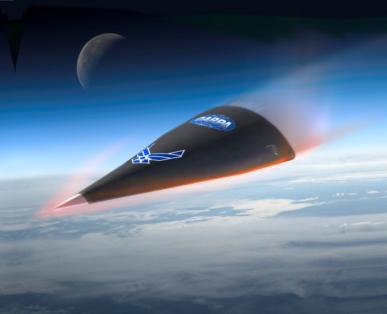In what appears to have been a brief publication error by the Air Force Nuclear Weapons Center, the agency that manages the service’s nuclear arsenal, the Air Force may have shown on a public website that it “has started researching enabling technology for an intercontinental-range, hypersonic glide vehicle (HGV).”
If the Air Force is planning on nuclear-capable intercontinental hypersonic weapons, this would be a significant development.
Aviation Week reported the story, but added that while this disclosure was part of a Request for information (RFI) inadvertently posted by the Air Force Nuclear Weapons Center on August 12, “senior Pentagon officials say there has been no change to a policy that ‘strictly’ limits the emerging class of hypersonic gliders and cruise missiles to non-nuclear warheads.”
SEE ALSO: To Counter China – Australian Air Force’s Game-Changing ‘Loyal Wingman’ Drone
According to Aviation Week, the two-most senior staffers leading the hypersonic weapons portfolio reiterated that policy during a press conference on March 2. “Our entire hypersonic portfolio is based on delivering conventional warheads,” said Mike White, assistant director of defense research and engineering for hypersonic weapons.
“DOD is not developing nuclear-capable hypersonic weapons,” said Lt. Col. Robert Carver, a spokesman for Mark Lewis, the director of defense research and engineering for modernization programs, adding, the Pentagon has not changed the policy since March 2.
Carver said in an email, quoted by Aviation Week, “There are common technology needs between the nuclear enterprise and hypersonic systems. Particularly in the area of high-temperature materials, we typically collaborate on the development of advanced dual-use materials technology. I will reiterate that our entire hypersonic program portfolio continues to be based on delivering conventional effects only.”
“The Defense Department (DOD) has three different operational prototypes for HGVs in development now: the Air Force’s AGM-183A Air-Launched Rapid Response Weapon, the Army’s Long Range Hypersonic Weapon and the Navy’s Intermediate Range Conventional Prompt Strike,” reports Aviation Week, adding:
Once fired from an aircraft, ground-launcher or submarine, all three are designed to strike targets with conventional warheads at intermediate range, which is defined as 1,500-3,000 nm by the official DOD Dictionary of Military and Associated Terms.
But the Pentagon has no acknowledged plan to develop an HGV with a range beyond 3,000 nm and maintains a policy that “strictly” prohibits arming any such weapon—regardless of range—with nuclear warheads.
However, not everyone is convinced, notes Aviation Week – despite assurances that DOD upholds the conventional-only policy for hypersonic gliders and scramjet-powered cruise missiles, the fact that the RFI came from the Nuclear Weapons Center raises questions, said James Acton, co-director of the Nuclear Policy Program at the Carnegie Endowment for International Peace.
“The fact that [this RFI] is coming from the nuclear weapons center, it makes it sound an awful lot like this would at least be nuclear-armed or conceivably dual-capable,” Acton said.
Perhaps, though, it is a good thing the U.S. Air Force is researching the possible deployment of nuclear-capable intercontinental HGVs. Currently, only the U.S. officially limits its HGV developments to conventional warheads. Russia has deployed the nuclear-armed ‘Avangard’ HGV on the SS-19 ICBM, while China is reportedly testing a nuclear-armed intercontinental-range hypersonic glide vehicle.
SEE ALSO: China Rushing to Double Its Nuclear Forces by 2030
In this critical national security field, the U.S. should definitely not be the odd man out.
Advertisement
Help President Trump Stop Joe Biden [ACT NOW]
















Russia has deployed theirs, THIS YEAR!
No not yet sparky
Read the article Einstein.
“Russia has deployed the nuclear-armed ‘Avangard’ HGV on the SS-19 ICBM…”
The Avangard is a Russian hypersonic glide vehicle that can be carried as a MIRV payload by the UR-100UTTKh, R-36M2 and RS-28 Sarmat heavy ICBMs. It can deliver both nuclear and conventional payloads. Wikipedia
Maximum speed: Mach 20-27
Launch platform: ICBM
Designer: Moscow Institute of Thermal Technology
Blast yield: 0.8 – 2 Mt
In service: 27 December 2019
Used by: Russia
Mass: ~2 tonnes (4,400 lb)
Try to keep up to speed……cough, cough, General?